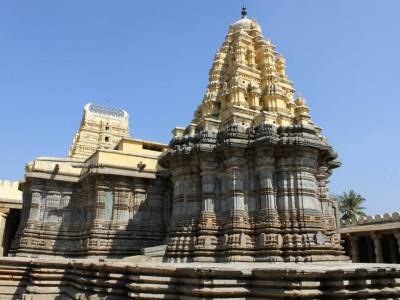Guddattu Sri Vinayaka
Temple is located at Kundapura, Udupi District in the state
of Karnataka, India.
It is a Hindu temple dedicated to god Ganapathy, also called Jaladhivasa Ganapathy Temple, It is the only Jaladhivasa Ganapathi temple in India. Lord Ganesha’s three-foot idol is believed to have emerged from the rock. Aayira Koda Seva, Tailabhyanjana, Panchamrutha and Rudrabhisheka are performed in the temple everyday.
Guddattu Sri Vinayaka
Temple History
According to
legends, Lord Shiva went to war against the demon Tripurasura.
Unfortunately, Lord Shiva forgot to worship Lord Ganesha before going to war.
Because of this, Lord Shiva was not victorious in the war. Lord Shiva got angry
after realizing that because of his son, Lord Ganesha, he could not achieve
victory. Angry Shiva shot hideous arrows aimed at Lord Ganesha. However, no
arrow hurt Ganesha. The arrows carried Lord Ganesha and threw him into the
ocean of honey.
Lord Ganesha emptied the ocean as he is very fond of honey. Lord Ganesha became happy and blessed Shiva. After that, Lord Shiva won the war and killed the demon. The excessive consumption of honey caused a burning sensation in Lord Ganesha and he began to writhe in pain. Lord Shiva took pity on his son and ordered Ganesha to reside in the pool adjacent to holy Narasimhatheertha. Lord Ganesha made the pond in the huge rock his home.
How to Reach Guddattu Vinayaka Temple:The nearest airport is
at Mangalore, Nearest Railway Station is at Kundapur and Udupi. by road,
Guddattu is well connected with all major cities.
Guddattu Vinayaka Temple
Shiriyara-Guddattu Road,
Guddattu Kundapura,
Yedadi Matyadi,




.jpeg)
.jpeg)

.jpeg)




_at_Nagamangala_Mandya_district.jpeg)

